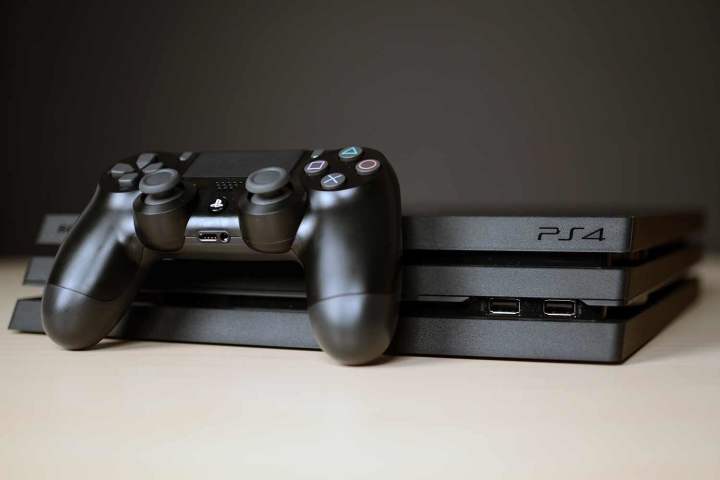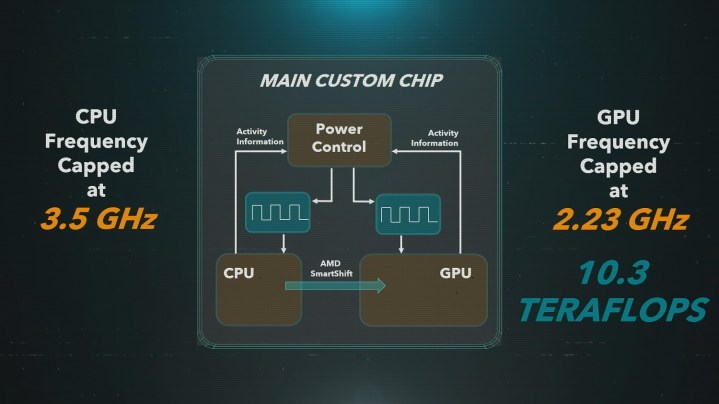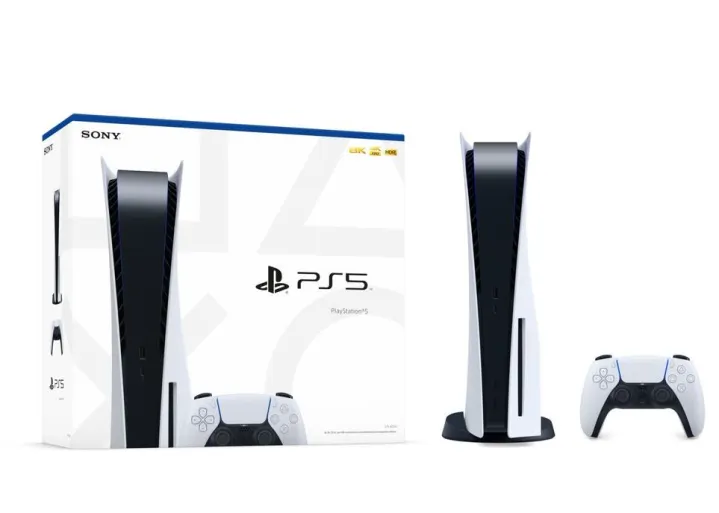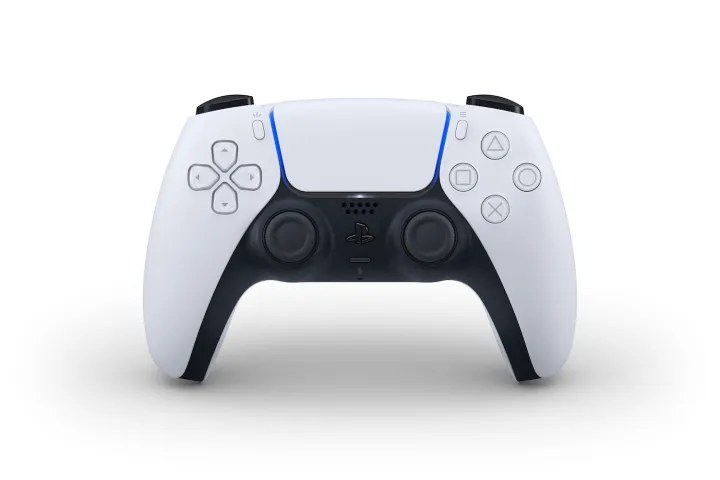The PlayStation 5 is finally here. It’s more powerful than its predecessor, but how exactly does Sony’s new system stack up against the apt-titled PlayStation 4 Pro when it comes to power, performance, and playability? The PS4 Pro got the job done for a while, but it seems its community is ready to move on to a newer and better console, one fit to go toe to toe with Microsoft’s Xbox Series X.
Here’s what you need to know about Sony’s latest console, and how much of an improvement you’re likely to see should you decide to make the jump to next-gen. Afterward, take a look at the best gaming deals available now.
See more:
PS4 Pro vs. PS5 specs

In nearly every regard, the PS5 is a better machine than the PS4 Pro. The one thing that — at first glance — might seem off is the PS5’s smaller hard drive size, which comes in at 825GB of memory. We’ll cover the system’s internal memory in more detail below, but for now, it’s important to distinguish the PS5’s solid-state drive (SSD) from the PS4 Pro’s hard disk drive (HDD). The PS5’s SSD is one of its shining factors, which bolsters the machine and makes the user experience better, thanks to its faster load times and an upgrade in overall performance. So that 825GB isn’t as much of a hindrance as it may seem, even if we are losing 175GB of storage space.
Aside from that, you can clearly see the improvements the PS5 has over the PS4 Pro, from its 10.3 TFLOPs to its 16GB GDDR6 memory, and the ability to accept Ultra HD Blu-ray disks. The only downside we know of when it comes to its specs is its weight and overall size. The PS5 comes in at 9.9 pounds — nearly 3 more pounds than the PS4 Pro — and is 15.4 by 10.24 by 4.09 inches, making it an absolute beast of a console. But when you factor in what the system can do, a heavier machine isn’t so bad.
Below is a table with each system’s raw specs.
| PlayStation 5 | PlayStation 4 Pro | |
| CPU | 8-core, 16 thread, up to 3.5Ghz (variable frequency) | 8 Jaguar Cores, 2.1GHz |
| GPU | 36 CUs at 2.23GHz, 10.3 TFLOPs (variable frequency) | 36 CUs at 911Mhz, 4.2 TFLOPS |
| Memory | 16GB GDDR6 | 8GB GDDR5 |
| Internal Storage | Custom 825GB SSD | 1TB HDD |
| External Storage | NVMe SSD slot, USB HDD | 2.5-inch HDD, USB HDD |
| Optical Drive | Ultra HD Blu-ray | Blu-ray |
| Video Output | 4K at 120Hz, 8K | 4K |
| Weight | 10.54 pounds | 7.3 pounds |
PS4 Pro vs. PS5 graphics

During system architect Mark Cerny’s “The Road to PS5” speech, we got our first look at the PS5’s specs. Like the PS4 Pro, the PS5 uses a custom AMD Radeon chip, but as you’d expect, the newer system is more powerful. The PS5 has more than double the number of CUs than on the PS4 Pro, but the main thing that makes a world of difference is the teraflops. TFLOPs is a term you might have heard a lot recently when discussing the new systems. It’s sort of a buzzword, but it does matter a great deal.
In essence, a TFLOP is a direct measurement of the computer’s (or in this case, the console’s) performance. The term refers to the system’s ability to calculate one trillion floating-point operations per second. The PS4 Pro includes 4.2 TFLOPs, which means it can handle 4.2 trillion floating-point calculations per second. The PS5, on the other hand, will double that and then some, offering 10.3 TFLOPs.
Thanks to the PS5’s 36 CUs and clock speed, it’s able to achieve a lot more from a graphical standpoint than any other PlayStation system before it. The PS5’s 2.23GHz is, again, over double that of the PS4 Pro, which comes in at 911Mhz. This measurement refers to the rate at which the system can perform internal operations, and it’s measured by cycles per second. With the PS5, its clock speed will vary based on the game and how much is required of the GPU.
When comparing the PS5 to a machine that’s four years older than it, even more can be said about the power of the new machine. As pointed out during Cerny’s discussion, the PS5 can do what the PS4 Pro can do, but with much less effort, due to its modern architecture. So when simply comparing numbers, it’s important to take into consideration that the new system will feature newer parts.
PS4 Pro vs. PS5 resolution

But what about resolution? We want our games to look better than ever, and Sony will deliver in that regard. The PS5 supports 4K output at 120Hz, as well as 8K, though don’t expect to see the latter used for a few years, as 4K displays are still making their way into the homes of consumers. Though the PS4 Pro can also output at 4K, it doesn’t support that resolution with all titles and doesn’t feature variable refresh rates.
The PS5 supports 120Hz displays, which is great for eliminating screen tearing and handling higher frame rates. We’re hoping for a standard 60 frames per second across the board, but some games like, Dirt 5, even support up to 120fps on the PS5. You’ll need a higher-end monitor to enjoy these frame rates, however, which is where the system’s support for 120Hz displays comes into play.
Also worth mentioning is the system’s HDMI 2.1 port, which isn’t standard yet but is a great move in the way of future-proofing. Again, this port is in line with what was mentioned above: Screen-tearing prevention and variable refresh rates. We’ll likely see HDMI 2.1 become more ubiquitous — along with 8K displays — as the PS5’s life cycle goes on.
PS4 Pro vs. PS5 price

After what felt like an eternity, Sony finally announced the price of both PS5 systems — the Standard Edition at $500 and the Digital Edition at $400. These prices are competitive and are around what people were expecting, especially when compared to a similarly priced Xbox Series X. Despite stating that these prices were set at the beginning of 2020, many believed Sony was waiting to find out how much Microsoft’s new Xbox would cost before setting the costs of the new PlayStation consoles. We’ll likely never know for sure, but we can assure that both companies will keep each other on their toes.
Price is a major factor when deciding whether or not to upgrade to a new system. Just look at how a high price impacted the sales of the PS3 in 2006, which infamously set consumers back $600. In 2006, that was a huge turn-off and would likely still steer potential buyers away today. Fast-forward seven years later to 2013 and the Xbox One suffered a similar fate due to its $500 price point — $100 more than the PS4’s. There are many factors that can impact a console’s overall success, but starting off on the right foot with a consumer-friendly price makes a world of difference.
Right now, you can grab a PS4 Pro for around $400, though you can sometimes grab it on sale for as low as $300. The thing is — this is not that much more affordable than the PS5. Even if you can’t seem to find the Digital Edition PS5 (due to scarce allocation), the Standard Edition is only around $100 more than a PS4 Pro. For $100 more, you get a faster system with an SSD and the ability to play exclusive games like Demon’s Souls and Godfall right away — plus nearly all of your PS4 and PSVR games. It’s practically a no-brainer.
Limited allocation is always a worry with the launch of a new generation of systems. Due to high demand, Nikkei and Bloomberg both report that Sony has doubled the number of PS5 systems that will be produced by March 2021 to around 9 million units, however, finding both iterations of the console remains a challenge, with retailers scrambling to hold on to the limited stock they have for more than a few minutes.
Looking for more? Check out our Deals hub for the best Black Friday PlayStation 4 deals.
PS4 Pro vs. PS5 storage

The PS5’s 825GB SSD might seem like a downgrade when compared to the PS4 Pro’s 1TB, but it’s actually an upgrade, at least in terms of performance. Sure, you’re losing 175GB of storage space, but the benefits of the SSD cannot be overstated. The PS5’s custom SSD features a raw read bandwidth of 5.5GB per second and is built specifically for the system, meaning it will run more efficiently than if it included a standard SSD. Even still, a stock SSD would outperform the PS4 Pro’s current HDD. According to Cerny, the PS5’s raw read bandwidth is “higher than any SSD available for PCs,” at least as of 2019.
Aside from the SSD’s sheer processing speed, it also allows for the decompression of file sizes thanks to the Oodle Kraken algorithm from RAD Game Tools. This data compressor allows developers to be more efficient when placing assets into a game, which will free up space and reduce texture pop-in. The files are read from the SSD in milliseconds, and developers are now free to get closer to their fully realized vision when creating games.
The SSD will not only impact PS5 games going forward but can also vastly improve the performance of PS4 games, many of which remain playable on the new system. Since SSDs are standard with the PS5, developers will be free to compress file sizes across the board, which will, in theory, allow you to store much more on the system’s drive. Suddenly, that 825GB of storage space doesn’t seem so bad if it means file sizes will be smaller.
You’ll also be able to expand the PS5’s memory by inserting certain M2 SSDs, though, as Cerny confirmed, these drives have to be as fast as the one included with the system and aren’t available for purchase as of yet. Cerny estimates that it might be a little while before those drives hit the market and advised to “hold off on getting that M2 drive until you hear from” Sony. Hopefully, the system’s 825GB will hold you over until those M2s are available to the public — possibly in 2021.
At the end of the day, the PS5’s SSD is one of the key factors that will make it a powerhouse of a system, not just in its performance, but in the freedom it will give developers.
PS4 Pro vs. PS5 games

What good is a new system if it doesn’t have a variety of games to play on it? Luckily, the PS5 offers more than you might expect from a newly-minted console, especially if you include titles that are readily available on last-gen systems, like Assassin’s Creed Valhalla and The Pathless. The launch lineup is limited but varied — it features family-friendly titles like Sackboy: A Big Adventure to more core experiences, such as Godfall — and there’s a host of notable exclusives set for the first half of 2021.
Here’s a list of every confirmed game for PS5 (games in bold are launch titles):
| Assassin’s Creed Valhalla | Dragon Age 4 | Hogwarts Legacy | NBA 2K21 | Riders Republic |
| Astro’s Playroom | Dustborn | Hood: Outlaws and Legends | NBA Live 21 | Sackboy: A Big Adventure |
| Atomic Heart | Dying Light 2 | Horizon: Forbidden West | Observer: System Redux | Scarlet Nexus |
| Battlefield 6 | The Elder Scrolls Online | Hyper Scape | Oddworld: Soulstorm | Sherlock Holmes: Chapter One |
| Borderlands 3 | Far Cry 6 | Immortals: Fenyx Rising | Outriders | Solar Ash |
| Bugsnax | FIFA 21 | JETT: The Far Shore | Overcooked: All You Can Eat | Stray |
| Call of Duty Black Ops: Cold War | Final Fantasy VII Remake | Just Dance 2021 | Outriders | Suicide Squad: Kill the Justice League |
| Chivalry 2 | Final Fantasy XVI | Kena: Bridge of Spirits | Paradise Lost | TemTem |
| Chorus | Fortnite | Little Devil Inside | The Pathless | Tribes of Midgard |
| Control | Ghostwire: Tokyo | LEGO Star Wars: The Skywalker Saga | Planet Coaster: Console Edition | Unknown 9: Awakening |
| Cris Tales | Godfall | The Lord of the Rings: Gollum | Pragmata | Vampire: The Masquerade – Bloodlines 2 |
| Cyberpunk 2077 | Goodbye Volcano High | Madden 21 | Project Athia | Vampire the Masquerade – Swansong |
| Death Loop | Gotham Knights | Maneater | Quantum Error | Warframe |
| Demon’s Souls Remake | Gothic | Maquette | Rainbow Six: Quarantine | Watch Dogs: Legion |
| Destiny 2 | Gran Turismo 7 | Marvel’s Avengers | Rainbow Six Siege | The Witcher III: Wild Hunt |
| Destruction: All-Stars | Grand Theft Auto V | Marvel’s Spider-Man | Ratchet & Clank: Rift Apart | Worms Rumble |
| Devil May Cry 5: Special Edition | Haven | Marvel’s Spider-Man: Miles Morales | Recompile | WRC 9 |
| Dirt 5 | Heavenly Bodies | Metal: Hellsinger | Resident Evil: Village | Yakuza: Like a Dragon |
| DOOM Eternal | Hitman III | Mortal Kombat 11 | Returnal |
There’s a lot to discuss when it comes to games — especially when comparing the PS5 to PS4 Pro. Of course, the PS4’s library is rich with thousands of offerings across seven years of the console’s life cycle. Games like God of War, Marvel’s Spider-Man, Horizon Zero Dawn, Bloodborne, Persona 5 Royal, and a number of excellent third-party offerings like Resident Evil 2 and Red Dead Redemption 2 are absolutely worth checking out. In short, if you have a PS4, whether it’s the base model, slim, or Pro, you’ll have a ton of fantastic games to enjoy.
It seems the PS5 will continue the legacy of top-notch games, simply judging by the list of confirmed, post-launch titles and those already available. We’re eagerly awaiting the release of Ratchet and Clank: Rift Apart and Resident Evil Village, not to mentioned Horizon Forbidden West. And, of course, there’s a ton we don’t know about as well. Since you can play nearly all of your PS4 games on a PS5, there isn’t much reason to spend $400 on an older piece of tech.
The big kicker comes with the supposed introduction of more expensive games. Recently, publisher 2K announced that NBA 2K21 would cost $70 on the PS5 and Xbox Series X — a $10 increase from current-gen AAA games. Demon’s Souls and Destruction All-Stars are both priced at $70. It’s unknown if this will translate to other releases across the board, but many are suspecting the $70 price point for games will be the new norm for next-gen consoles. That might sound bad, but considering game prices have stayed the same since 2005, it’s about time we saw an increase in cost.
Again, when accounting for inflation, a $60 game in 2005 would cost nearly $80 in today’s money, so the $70 price isn’t even as high as it ought to be. Considering the meteoric cost to develop AAA games, in conjunction with microtransactions and DLC running rampant, the supposed $70 price could mitigate some of those issues, making games feel much more complete and less “predatory” when it comes to their business practices.
Backward compatibility

Another big factor to consider is the idea of backward compatibility. At first, many believed the PS5 would be fully backward compatible with PlayStation’s entire library of games — from the PS1 to PS4. Unfortunately, that idea has been squashed, but we do know the PS5 will work with 99% of PS4 games, including PSVR titles. You’ll also notice better load times thanks to the PS5’s SSD.
Recently, Sony announced that only a handful of PS4 games would not be compatible with PS5. The list is as follows:
- DWVR
- Afro Samurai 2 Revenge of Kuma Volume One
- TT Isle of Man — Ride on the Edge 2
- Just Deal With It!
- Shadow Complex Remastered
- Robinson: The Journey
- We Sing
- Hitman Go: Definitive Edition
- Shadwen
- Joe’s Diner
According to Sony, every other PS4 game will work on your PS5. It is worth mentioning that Ubisoft recently released info about some of its PS4 games not working on the PS5, but retracted its statement, due to possible “inaccuracies.”
Another thing to note is that many PS4 games will be enhanced on the PS5. Games like God of War and Ghost of Tsushima can run at 60fps, along with a slew of other titles. Cross-play between the PS5 and other consoles is also possible, though, it’s currently only available with select titles such as Apex Legends and Borderlands 3.
Lastly, the PS5 will support larger games than the PS4 Pro. The console features an Ultra HD Blu-ray drive, which has the capability of accepting Blu-ray discs of up to 100GB of data. The PS4 Pro includes a standard Blu-ray drive that was outdated even when it released in 2016. You’ll recall that the Xbox One X launched with a 4K Blu-ray drive just a year later.
PS4 Pro vs. PS5 controllers

The PS4 and PS4 Pro use the DualShock 4, an evolution of Sony’s trusted controller. The Dualshock 4 was relatively similar to the previous PlayStation controllers that came before it, with a few added bells and whistles. But now, the PS5 has dropped the Dualshock branding altogether, in favor of the new DualSense controller. While it still features the same basic button layout from before, as well as a larger trackpad, the DualSense includes innovative features that aim to change the way we play games, allowing for a more tactile experience.
One of its highlights is its adaptive triggers, which offer varying degrees of resistance depending on how far you pull them and increases the overall level of immersion while playing games. Additionally, the DualSense features haptic feedback — replacing the old rumble feature from the DualShock 4 — and a built-in microphone, giving you a quick means to converse with other players without a headset.
The most obvious change — at least aesthetically — has to do with Sony’s choice of color for the DualSense. Gone is the iconic, jet-black scheme that has defined the past three iterations of PlayStation controllers. Instead, the DualSense has a bit more heft to it and comes in a mashup of black and white, mirroring the console itself. It will likely come in more colors down the line, much like the DualShock controllers before it.
As for its price, the DualSense controllers retail for $70, while a PS4 controller starts at around $60 for a standard edition. This $10 increase can be attributed to the DualSense’s new haptic feedback features, adaptive triggers, and better battery life.
PS4 Pro vs. PS5 editions

Finally, let’s get into the different versions available with the PS5. We covered it briefly above, but yes, there will be two PS5 SKUs: A standard edition and a digital edition. The two models were revealed during the PS5 Future of Gaming event and feature the same internal specs — aside from the lack of disc drive with the Digital Edition. If you look closely at the image above, you can see a slight bump on the Standard Edition on the right, which accommodates Blu-ray discs. The model on the left, the Digital Edition, is slightly sleeker, due to its lack of disc drive.
There is only one version of the PS4 Pro in terms of specs, though the system itself serves as an iteration on the original PS4. There are, however, multiple editions of the PS4 Pro that feature different designs. We love the Marvel’s Spider-Man edition that features a red PS4 Pro system with the spider logo in the center. Oftentimes, these special-edition consoles come with exclusive controller variants, as well. There are PS4 Pro models for Death Stranding, God of War, Destiny 2, and, most recently, The Last of Us Part II.
Sony hasn’t confirmed if we’ll be getting any special edition PS5 systems, but we think it’s likely we’ll start to see some new colors and variants in the future. It’s also relatively easy to remove the side panels on the PS5, which could lead to an inexpensive way to customize your PS5. If Sony does make special edition PS5 systems, will they be available for both the standard and digital edition? We’ll have to wait to find out.
Editors' Recommendations
- PS5 Pro: news, rumored release date, price, and specs
- Fallout 4 is finally getting free Xbox Series X and PS5 upgrades
- Best gaming console deals: cheapest prices on PS5, Xbox S and X and Switch
- PS Plus Extra subscribers can try two of the month’s biggest PS5 games for free
- All upcoming PS5 games: 2024 and beyond




